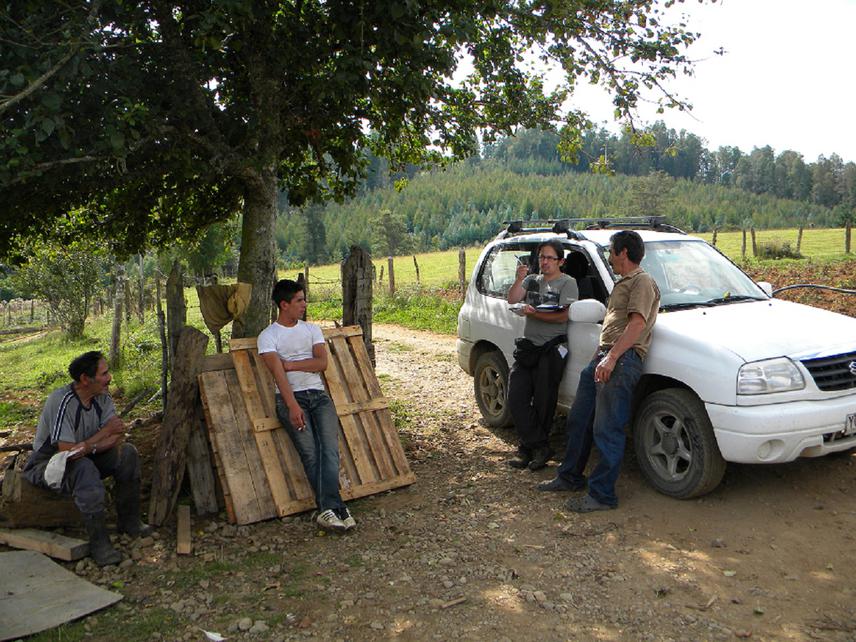Rene Reyes Gallardo
The project aims to:
a) Identify the current main fuelwood production areas in “Los Rios Region”,
b) Analyse market failures driving forest degradation in the main fuelwood production areas,
c) Generate policy proposals to reduce forest degradation.

Meeting with firewood producers in Paillaco municipality.
The Chilean Temperate Rainforest has been classified as a global conservation priority, due to its status as a biodiversity hotspot, with a high level of endemism and high rates of deforestation and forest degradation. A recent publication found that these forests have been reduced by 50% in the last 5 centuries (Lara et al. 2012).
Forest degradation changes the ecological condition of forests, altering biodiversity and their environmental functions. Forest degradation is a complex problem, since underlying drivers are diffuse and varied (socioeconomic, legal, etc.). According to national statistics, 93% of wood harvested from the Chilean Temperate Rainforest is used as fuelwood, so there is a close relationship between forest degradation and fuelwood demand. In Los Rios Region, more than 80% of households use fuelwood to heat and cook.
National policies, based on command and control regulations, have failed to reduce forest degradation, because of the extent of territory, institutional weaknesses (budget), and difficulties in detecting it. This project pretends to identify the current main fuelwood production areas in “Los Rios Region” (one of the poorest Chilean regions), analyse market failures driving forest degradation, and generate policy proposals to reduce forest degradation in key ecosystems. This process will be carried out with the participation of rural families (fuelwood producers), and will be summarized in a book for policy makers to improve the implementation of policies, such as the new Native Forest Law. The literature points out that forest degradation is highly related to market failures, like information asymmetries, market monopolies, land tenure problems, etc.
A regional analysis shows specific territories where forest degradation rates are higher. If public efforts and resources were focussed on those areas, where different kinds of market failures are acting, it could achieve a large and positive impact on forest conservation with lower public investment, and reach optimal social and environmental outcomes.